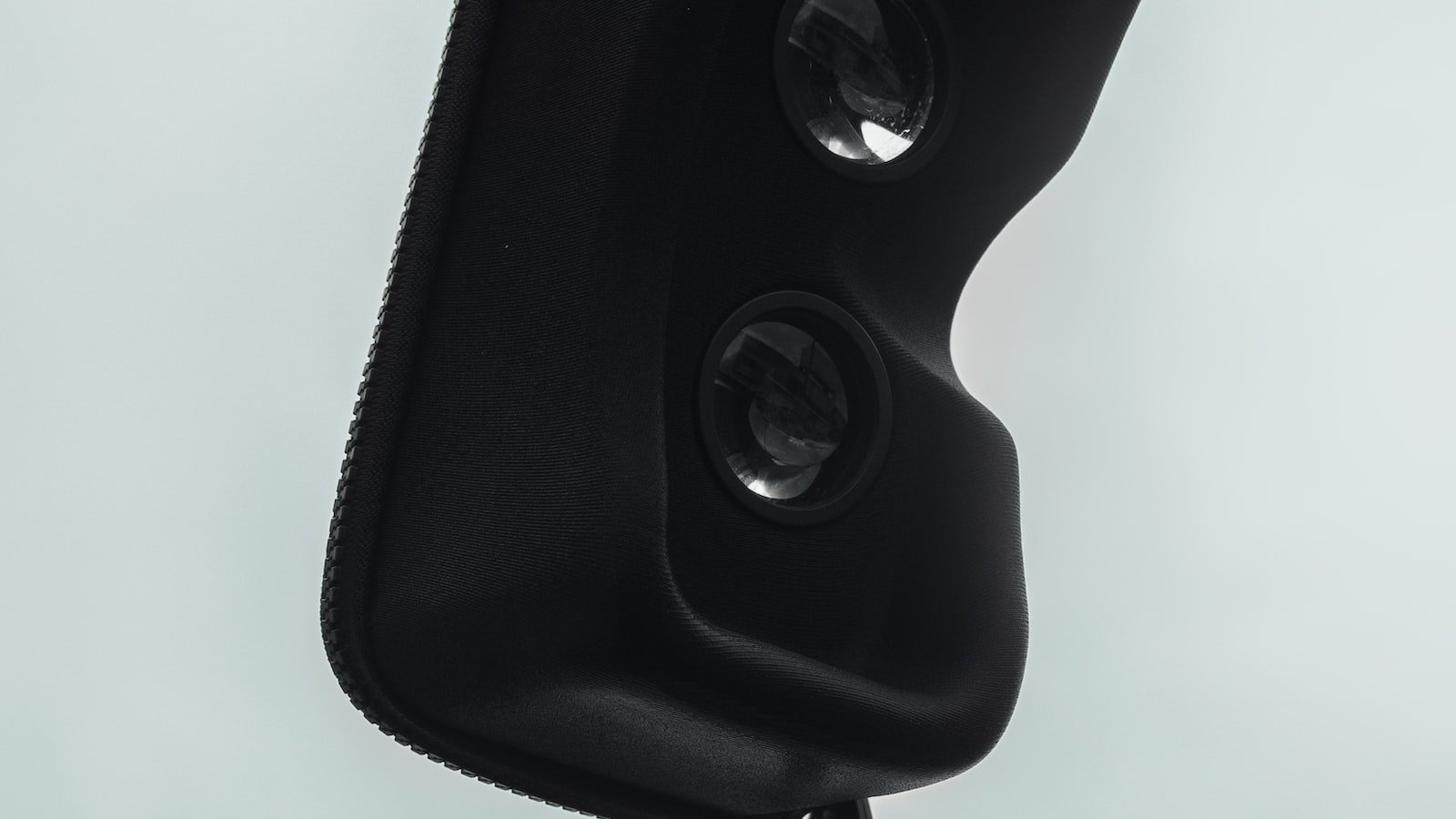Imagine a world where reality goes beyond what meets the eye, where mundane marketing strategies are transformed into extraordinary experiences that captivate and engage consumers on a whole new level. Welcome to the realm of Augmented Reality (AR), where digital elements seamlessly merge with the physical world, blurring the boundaries between what is real and what is not. In this article, we delve into the intricate realm of AR and explore its limitless potential to shape the future of marketing. Prepare to embark on a thrilling journey where imagination knows no bounds, as we uncover how AR is revolutionizing the way brands connect with audiences, leaving a lasting impression that defies the limitations of reality. Get ready to step into the future as we take a leap beyond reality and unveil the undeniable power of AR in shaping the landscape of marketing. 

The evolution of augmented reality (AR) marketing has revolutionized the advertising landscape, driving a paradigm shift that goes beyond traditional methods. By leveraging AR technology, brands are able to craft immersive and engaging experiences that captivate their audience like never before. This technology allows brands to unlock the potential of interactive capabilities, creating a whole new level of customer engagement.rnrnOne key strategy for integrating AR into marketing is through gamification. By incorporating elements of gamification into their campaigns, brands can create interactive experiences that encourage active participation from consumers. From virtual treasure hunts to interactive quizzes, gamified AR campaigns bring a sense of fun and excitement to the brand experience. Not only does this increase customer engagement, but it also fosters a sense of loyalty and builds brand affinity.rnrnAnother effective strategy for AR integration is personalization. Through AR, brands can provide personalized experiences tailored to each individual customer. Whether it’s trying on virtual clothes or visualizing how furniture would look in their home, personalized AR experiences make customers feel seen and valued. By utilizing AR technology to deliver personalized content and recommendations, brands can establish a strong connection with their target audience and enhance customer satisfaction.rn rnrn
rnrn rnIn conclusion, the role of augmented reality in marketing is evolving rapidly, pushing the boundaries of what is possible. From gamification to personalization, brands are finding creative ways to leverage AR technology to create immersive and engaging brand experiences. By embracing this shift and harnessing the interactive capabilities of AR, marketers can unlock the full potential of this technology and shape the future of marketing in exciting and innovative ways.
rnIn conclusion, the role of augmented reality in marketing is evolving rapidly, pushing the boundaries of what is possible. From gamification to personalization, brands are finding creative ways to leverage AR technology to create immersive and engaging brand experiences. By embracing this shift and harnessing the interactive capabilities of AR, marketers can unlock the full potential of this technology and shape the future of marketing in exciting and innovative ways.
Q&A
Q: What is the future of Augmented Reality (AR) in marketing?
A: The future of AR in marketing holds endless possibilities, with the technology expected to become an indispensable tool for engaging consumers in a more immersive and interactive way.
Q: How does AR differ from Virtual Reality (VR)?
A: AR differs from VR in that it overlays digital content onto the real world, seamlessly blending the virtual and physical environments. VR, on the other hand, creates an entirely immersive digital environment, usually requiring the use of a headset.
Q: How can AR enhance the consumer experience?
A: AR can enhance the consumer experience by providing interactive and personalized content, allowing consumers to visualize products in real-life settings, and creating unique and memorable brand experiences.
Q: Can AR help bridge the gap between online and offline shopping experiences?
A: Absolutely! AR has the potential to bridge the gap by allowing consumers to try products virtually, visualize how they would fit into their lives, and make informed decisions before purchasing. This integration can improve customer satisfaction and increase online conversions.
Q: How are brands leveraging AR in their marketing strategies?
A: Brands are leveraging AR in various ways. Some are using AR filters on social media platforms to engage with their audience and promote products. Others are creating AR-powered showrooms, virtual try-on features, and interactive advertisements to provide interactive brand experiences.
Q: What challenges need to be overcome for AR to reach its full marketing potential?
A: There are a few challenges to overcome for AR to reach its full potential. These include technological limitations, ensuring widespread adoption of AR-compatible devices, and addressing privacy concerns associated with collecting user data.
Q: What industries can benefit the most from incorporating AR into their marketing strategies?
A: While all industries can benefit from incorporating AR into their marketing strategies to some extent, industries such as fashion, home decor, automotive, tourism, and entertainment are particularly suited for AR integration due to their reliance on visual experiences and consumer engagement.
Q: How can small businesses utilize AR in their marketing efforts?
A: Small businesses can utilize AR in their marketing efforts by partnering with AR development companies or utilizing easy-to-use AR creation tools. They can create virtual product demonstrations, virtual tours, or offer AR-powered promotions to attract and engage customers.
Q: Will AR eventually replace traditional marketing techniques?
A: It is unlikely that AR will completely replace traditional marketing techniques. Instead, AR will likely become another essential tool in the marketer’s toolkit, complementing traditional methods and opening new avenues for creativity and consumer engagement.
Q: What impact could AR have on the future of advertising?
A: AR has the potential to revolutionize advertising by blurring the lines between the physical and digital worlds. It can create highly personalized and interactive experiences, allowing advertisers to deliver targeted messages to consumers based on their preferences and behavior, ultimately increasing the effectiveness of advertising campaigns. As we delve into the realm of augmented reality, we unearth a world of infinite possibilities and untapped potential. With every passing day, technological advancements continue to reshape our understanding of reality, blurring the lines between the physical and digital. In this article, we have embarked upon an extraordinary journey, exploring the transformative power of AR in the world of marketing.
From immersive brand experiences to interactive advertising campaigns, AR has emerged as a formidable force in capturing the attention and imagination of consumers. It has taken marketing beyond the realms of reality, transporting us to a dimension where creativity knows no bounds. No longer confined to traditional channels, AR enables brands to craft remarkable narratives that seamlessly blend the digital with our physical surroundings, revolutionizing the way we perceive and engage with products and services.
However, like any technological breakthrough, AR comes with its own set of challenges and hurdles. As marketers navigate this uncharted territory, they must also consider the ethical implications and potential implications of this digital realm. Striking the delicate balance between innovation and responsible usage will shape the future trajectory of AR in marketing, ensuring that it remains a force for good.
The impact of augmented reality on marketing knows no limits; its vast potential continues to unfurl before our very eyes. As we stand at the cusp of this exhilarating frontier, it is imperative for marketers to grasp the boundless opportunities presented by AR. By embracing this transformative technology, brands have the power to carve powerful connections, captivate audiences, and etch their presence in the minds of consumers.
With every passing wave of innovation, augmented reality propels marketing into unchartered territories. It is a gateway to a world where imagination is limitless, where the boundaries between what is real and what is augmented blur seamlessly. As we unlock the full potential of AR, we usher in a new era of marketing, one that transcends beyond reality itself.
So, step boldly into this world of extraordinary potential, for the future of marketing lies in shaping augmented reality. Immerse yourself in the possibilities, embrace the unknown, and sculpt the path that stretches beyond reality’s veil. As technology evolves and our imagination broadens, let us harness augmented reality to reshape the narrative of marketing, and propel it into a future filled with limitless creative possibilities.

